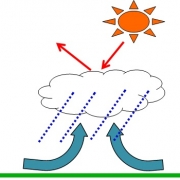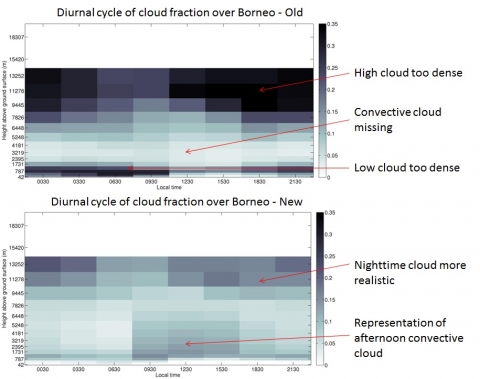Regional Climate Modeling of the Maritime Continent
Team Member: Rebecca Gianotti
The Eltahir Research Group is involved with the Singapore-MIT Alliance for Research and Technology (SMART) through the Center for Environmental Sensing and Modeling (CENSAM). With CENSAM, we are working to better understand the regional climate of the Maritime Continent, the patchwork of islands and oceans that constitutes the archipelago portion of Southeast Asia. This region has the highest rainfall observed anywhere in the world.

Average observed rainfall as reported by NASA’s TRMM product.
Our work focuses on processes that occur at diurnal timescales, especially radiative heating, cumulus cloud formation and convective rainfall. These processes are strongly controlled by characteristics of the land and ocean surface and by interactions between the earth’s surface and the atmosphere. Diurnal processes help shape the long-term climate of the entire Maritime Continent region and provide enormous inputs of heat and moisture to the upper troposphere, with implications for global atmospheric circulations. However, almost all climate models contain large errors when simulating these processes, including the regional climate model used in our group – RegCM3.

The diurnal cycles of incoming solar radiation, convective updrafts, cumulus cloud formation and rainfall are all interconnected and require accurate representation in models.
We use a wide range of observations, sourced from both ground stations and satellites, to precisely pinpoint sources of model error. We have found that RegCM3 does not correctly simulate the observed diurnal cycle of cloud cover, especially cumulus clouds associated with convection over land. This error propagates into significant error in the solar radiation received at the earth’s surface, turbulent fluxes of sensible and latent heat, and convective rainfall.
Significant improvements to RegCM3’s ability to simulate tropical climate are ongoing. We have created a new way to simulate convective cloud cover, which matches much more closely to observed patterns of cumulus clouds in the region. We have also developed a new method for calculating the efficiency of convective precipitation. These new methods are relatively simple, but importantly they are physically-based and derived from observed cloud and rainfall properties.

Our new method for calculating cloud cover leads to much more realistic representations of the cumulus cloud associated with mid-afternoon convection over land.
Future work will target the currently erroneous timing of the daily rainfall peak, a notorious problem in large-scale climate models. It is hoped that model improvements such as these, which aim to substantially increase the physical realism of simulated land-atmosphere interactions, will allow greater reliability and confidence in predictions of future climate change in the Maritime Continent region.
cloud
convection
diurnal
Maritime Continent
RegCM3
